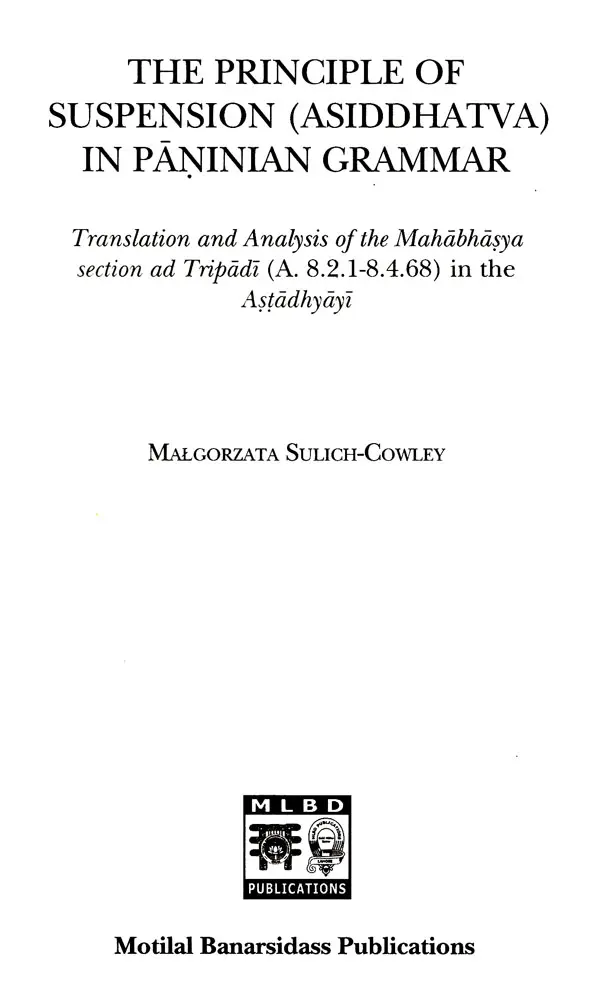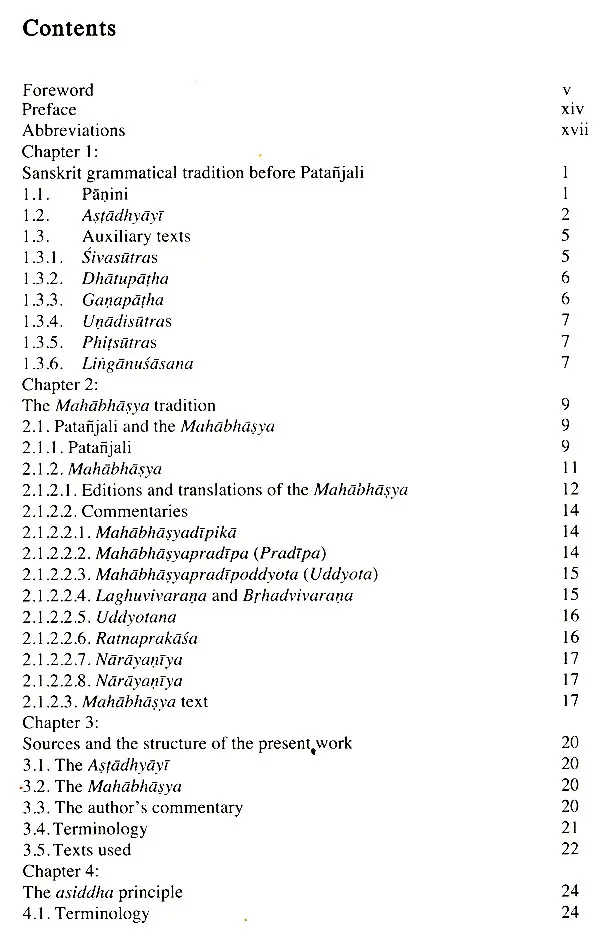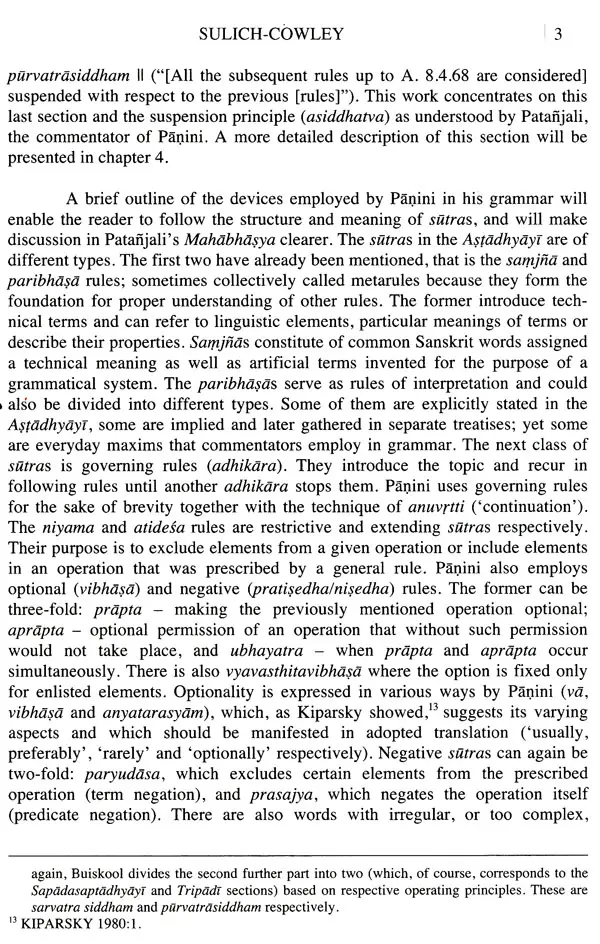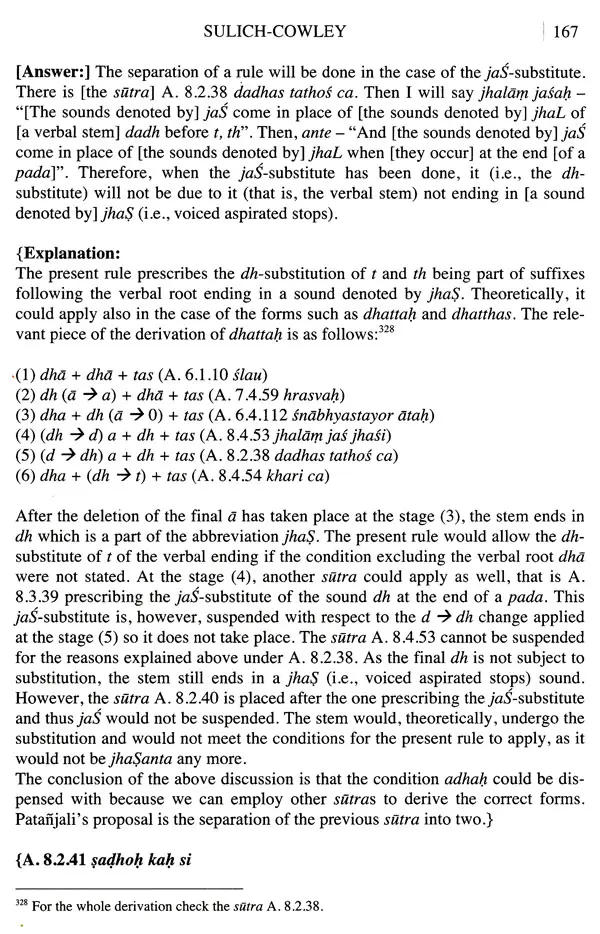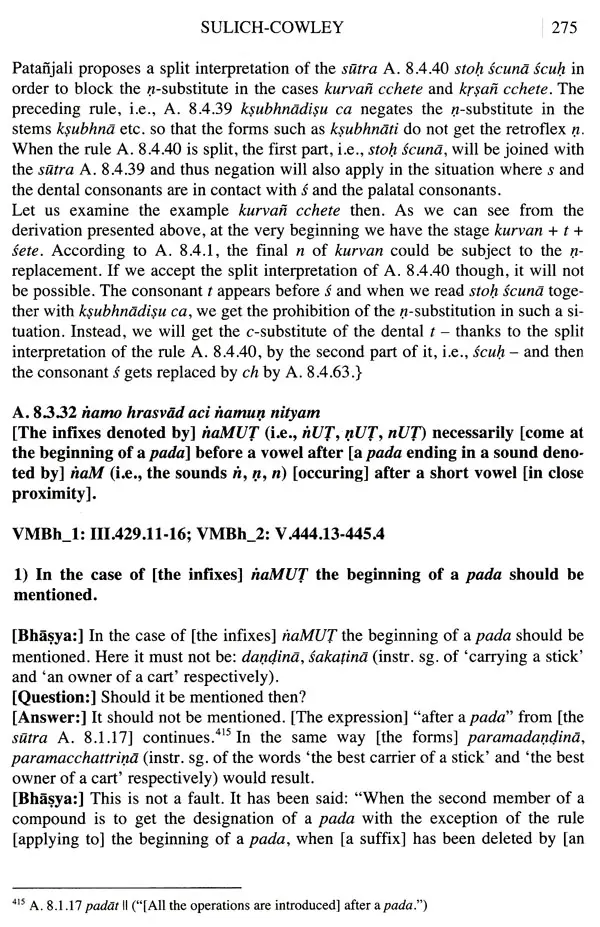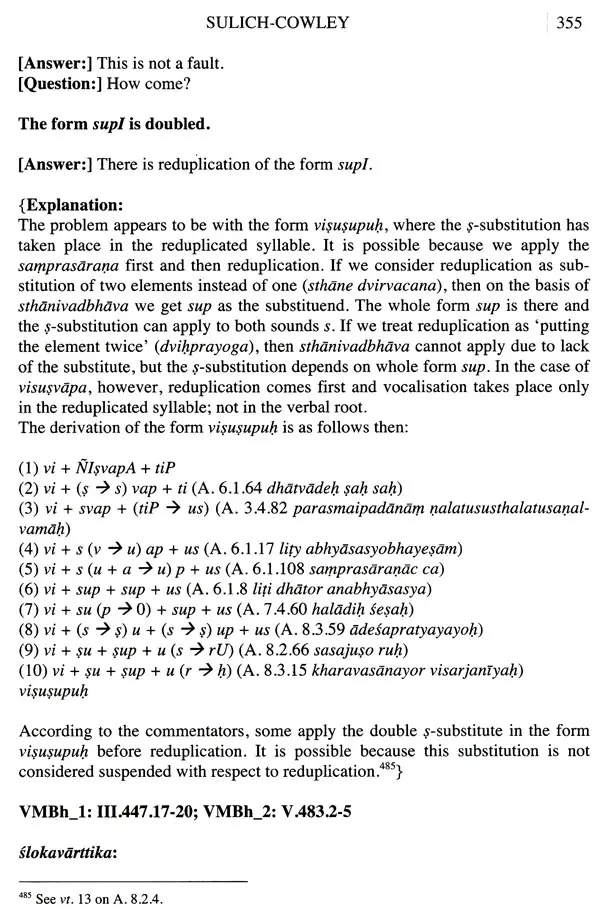
The Principle of Suspension (Asiddhatva) In Paninian Grammar
Book Specification
| Item Code: | UAP712 |
| Author: | Malgorzata Sulich Cowley |
| Publisher: | Motilal Banarsidass Publications, Delhi |
| Language: | English |
| Edition: | 2022 |
| ISBN: | 9789391759476 |
| Pages: | 483 |
| Cover: | HARDCOVER |
| Other Details | 9.00 X 6.00 inch |
| Weight | 620 gm |
Book Description
The present volume contains a translation and analysis of the Tripädi section of the Anidhyayi along with the relevant passages from the Mahaldsyn by Patanjali. Patanjali's role in elucidating the intricacies of Panini's grammar cannot be emphasized strongly enough, yet he finds it difficult at times to navigate between various, seemingly similar, rule ordering principles in the Aryayi. The book concentrates on Patanjali's understanding of asiddhatva and solutions he proposes to the question of rule suspension.
The author discusses various aspects of the term asiddha in the fourth section. She gives the literal meaning of the word asiddha as 'that which has not been accomplished'. She rightly assigns the meaning 'suspended' to the term 'asiddha', which effectively means that the grammatical operation or the aphorism which has prescribed that grammatical operation should be treated as if non-existent for a particular grammatical operation to take place. Then she moves on to take up the tripidi and abhiya sections and presents a good exposition supported by illustrations. The discussion on the käryäsiddhaton and Sastrasiddhaton versus asiddhavatta is useful in understanding the issues involved. Her comparison between siddhatoa and asiddhatva on the one hand and between siddhatra and nityatva on the other is also worth paying attention to. Taking up the problem of sthanivadbhava she says that the traditional view of treating sthanivadbhava and asiddhatra at par is highly unlikely since Panini has used two different terms and apparently invokes the standpoint of S. D. Joshi in her support.
Besides discussing the relevant grammatical issues logically, the significant contribution of the author is the fifth section of the present work. In 5.1 she gives the analysis of satvatukorasiddhah A. 6. 1. 86 accompanied by an explanatory exposition of various grammatical issues that have come up while discussing the significance of the sutra. In 5.2 (pp. 61-434) she presents the translation and analysis of the whole of tripadi with adequate illustrations showing grammatical structure. While discussing the sutras, vārttikas and Mahabhasya in detail, the explanation of the grammatical structure of the illustrations helps the reader in comprehending the relevant grammatical issues in the right perspective. After a proper understanding of the import of the sutra, one gains insight into the problem and thus is enabled to appreciate the significance of grammatical nuances.
**Contents and Sample Pages**
